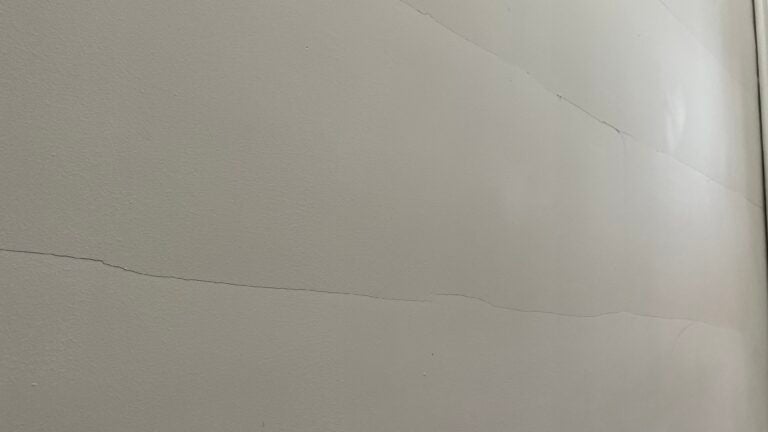Address newsletter
Get the latest news on buying, selling, renting, home design, and more.

Q. This is the first-floor ceiling of our daughter’s home, which she purchased in 2020. We think it was built in the 1940s, and it looks to have been remodeled 15 years ago with the addition of a new kitchen and windows. What could be causing these cracks? This is through the entire first floor. There is a heated basement below and two floors above it. The attic has foam insulation. My daughter had a company come in through Mass Save to seal up everything over the winter.
J.C.
A. These cracks almost certainly are falling along the seams of the ceiling wallboard. Back in the ‘40s, they were installing first-generation wallboard that was typically 24 inches wide by 60 inches long. They didn’t use tape on the seams, just a heavy base and a veneer coat. These crack over time, as you’ve seen. It looks as if someone made repairs at your daughter’s home and painted over it — a temporary fix. I recommend doing a ceiling layover, which involves screwing in the existing ceiling with screws long enough to grab the framing. Then go over the entire ceiling with a new layer of half-inch blueboard and plaster. Be sure not to place your new seams on top of the existing failed ones; you want to stagger the joints. If you have crown molding, you will have to take it down and reinstall it. Then it’s time to prep and paint. This repair will last generations.
Q. I have a very nice Fiberglas door that a painter restained too dark. I would like to redo it. When I got the door, it was primed with a Fiberglas primer, then topped with a beautiful oak oil-based stain. Can I lightly sand the door (so as not to damage the wood grain texture), remove the top coat, clean the door thoroughly with mineral spirits, apply one or two coats of a spray-on fiber glaze primer, and then restain to the original oak color with an oil-based product? Or I could strip the previous stain with a multistrip, if you think that would work better. I have tested the Fiberglas primer on sample panels after I stained them dark, and it worked really well.
D.
A. To be perfectly honest, I would replace the door. It would be more cost effective, unless you have unlimited time and patience. It is possible to strip off the stain on a Fiberglas door gently, but please do NOT sand it. You will ruin the very thin Fiberglas skin that covers the foam core of the door. To strip a Fiberglas door, you need to use a very mild/organic stripper. Most strippers on the market would melt the Fiberglas. As you could imagine, this is a very slow process, which means you would have no entry door for many days. This type of work should be done on a workbench. In the end, it is very difficult to get all the stain off in between the embossed grain pattern, and you may wind up unhappy with the results. Fiberglas doors have become the norm now, so there is a fantastic array of species and finishes available. Plus, they are very affordable.
Mark Philben is the project development manager at Charlie Allen Renovations in Cambridge. Send your questions to [email protected]. Questions are subject to editing.
Get the latest news on buying, selling, renting, home design, and more.
Stay up to date with everything Boston. Receive the latest news and breaking updates, straight from our newsroom to your inbox.
Conversation
This discussion has ended. Please join elsewhere on Boston.com